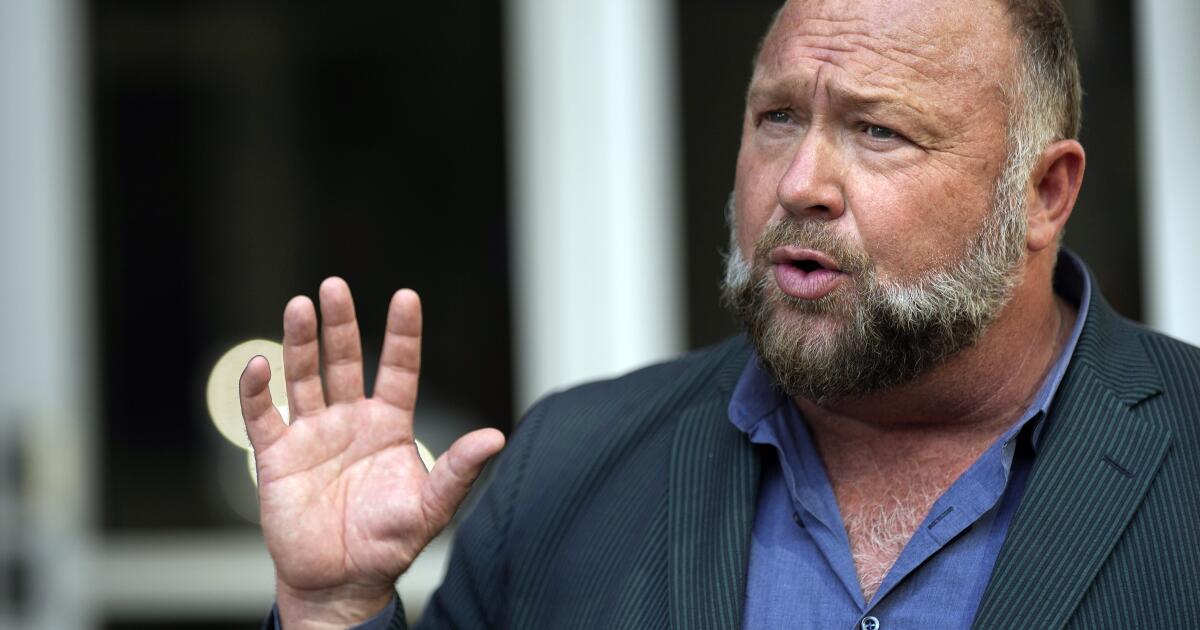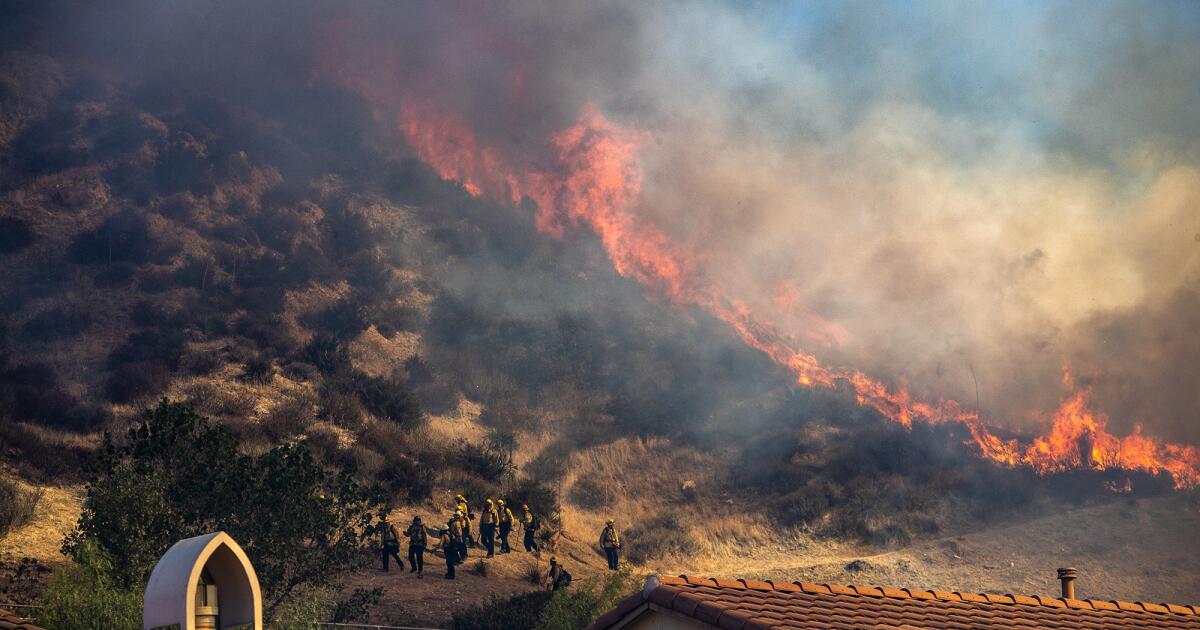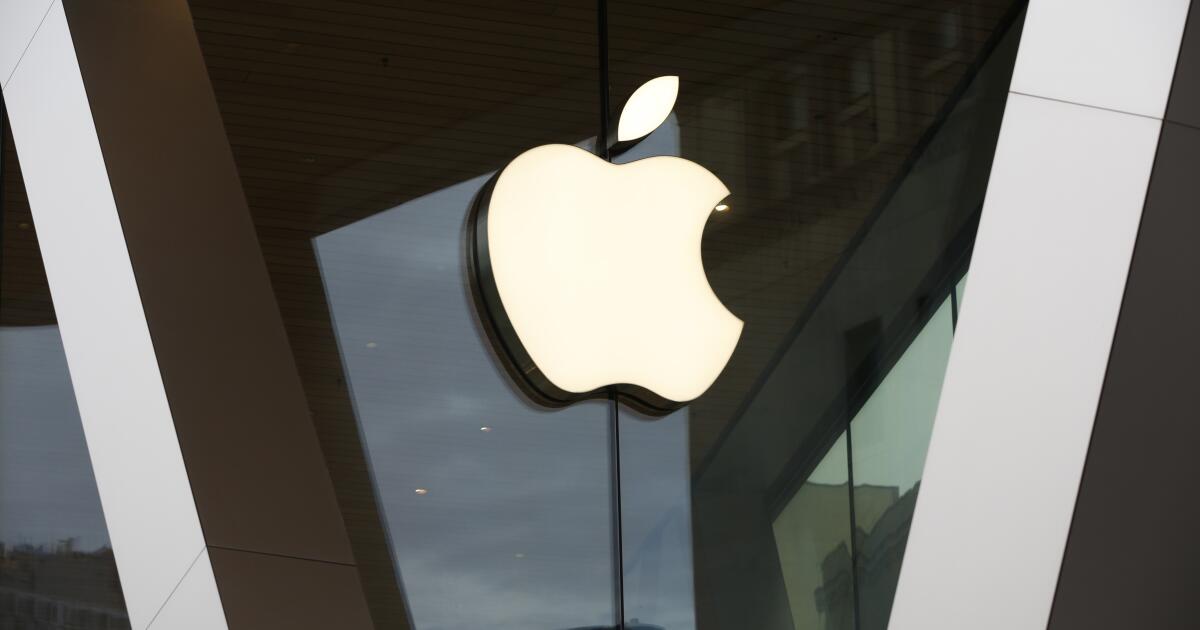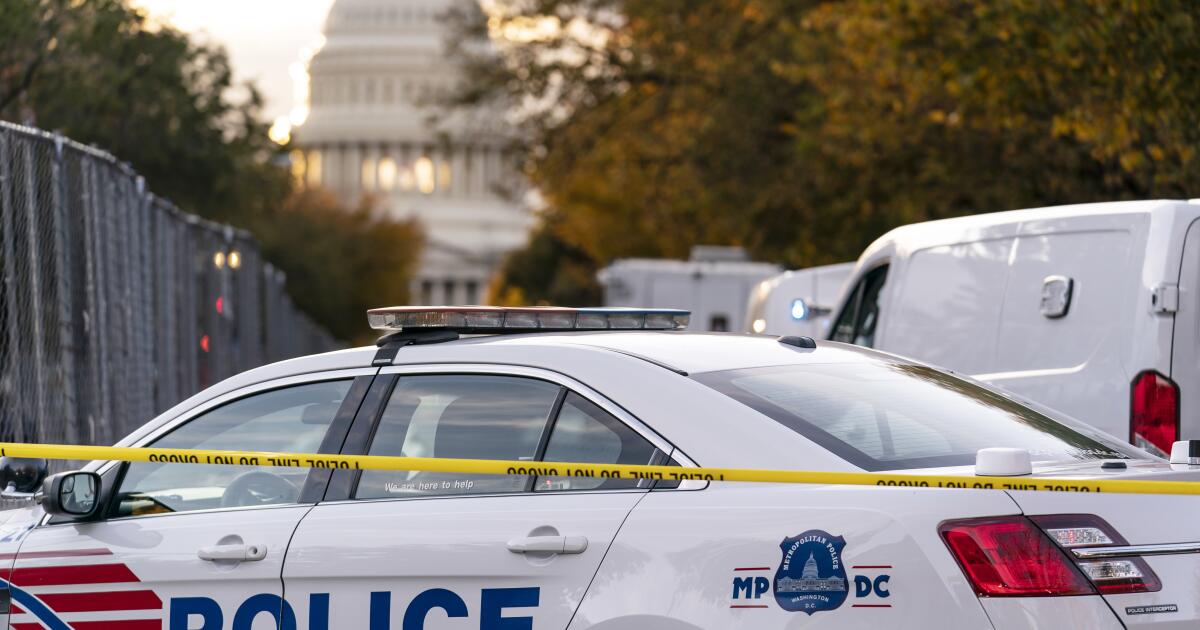Supreme Court rejects Alex Jones’ appeal of $1.4-billion defamation judgment in Sandy Hook shooting
WASHINGTON — The Supreme Court on Tuesday rejected an appeal from conspiracy theorist Alex Jones and left in place the $1.4-billion judgment against him over his description of the 2012 Sandy Hook Elementary School shooting as a hoax staged by crisis actors.
The Infowars host had argued that a judge was wrong to find him liable for defamation and infliction of emotional distress without holding a trial on the merits of allegations lodged by relatives of victims of the shooting, which killed 20 first-graders and six educators in Newtown, Conn.
The justices did not comment on their order, which they issued without asking the families of the Sandy Hook victims to respond to Jones’ appeal. An FBI agent who responded to the shooting also sued.
A lawyer who represents Sandy Hook families said the Supreme Court had properly rejected Jones’ “latest desperate attempt to avoid accountability for the harm he has caused.”
“We look forward to enforcing the jury’s historic verdict and making Jones and Infowars pay for what they have done,” lawyer Christopher Mattei said in a statement.
A lawyer representing Jones in the case didn’t immediately respond to an email seeking comment. During his daily show on Tuesday, Jones said his lawyers believed his case was “cut and dry,” while he had predicted the high court wouldn’t take up his appeal.
“I said no, they will not do it because of politics,” Jones said.
Jones mocked the idea that he has enough money to pay the judgment, saying his studio equipment, including five-year-old cameras, was only worth about $304,000.
“It’s all about torturing me. It’s all about harassing me. It’s about harassing my family. It’s about getting me off the air,” said Jones, who urged his listeners to buy merchandise to keep the show running.
Jones filed for bankruptcy in late 2022, and his lawyers told the justices that the “plaintiffs have no possible hope of collecting” the entire judgment.
He is separately appealing a $49-million judgment in a similar defamation lawsuit in Texas after he failed to turn over documents sought by the parents of another Sandy Hook victim.
In the Connecticut case, the judge issued a rare default ruling against Jones and his company in late 2021 because of what she called Jones’ repeated failure to abide by court rulings and to turn over certain evidence to the Sandy Hook families. The judge convened a jury to determine how much Jones would owe.
The following year, the jury agreed on a $964-million verdict and the judge later tacked on another $473 million in punitive damages against Jones and Free Speech Systems, Infowars’ parent company, which is based in Austin, Texas.
In November, the satirical news outlet The Onion was named the winning bidder in an auction to liquidate Infowars’ assets to help pay the defamation judgments. But the bankruptcy judge threw out the auction results, citing problems with the process and The Onion’s bid.
The attempt to sell off Infowars’ assets has moved to a Texas state court in Austin. Jones is now appealing a recent order from the court that appointed a receiver to liquidate the assets. Some of Jones’ personal property is also being sold off as part of the bankruptcy case.
Sherman writes for the Associated Press. AP writer Susan Haigh in Hartford, Conn., contributed to this report.



